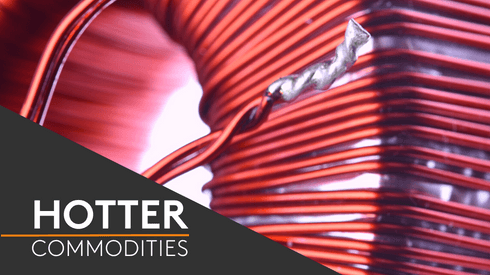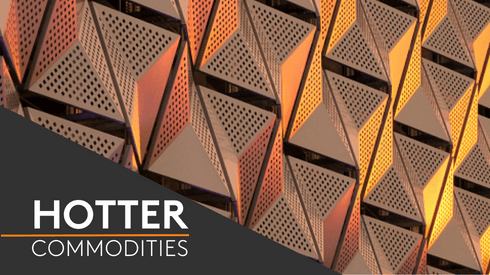Nickel continues to lead the pack with a 1.5% gain to $12,895 per tonne, followed by copper prices that are up by 1.2% at $6,962 per tonne. Aluminium prices are down by 0.2% and tin prices are little changed, while lead and zinc prices are up an average of 0.7%.
Volume remains high with 11,473 lots traded as of 08:03 GMT.
This morning follows a diverse performance on Friday, when zinc and copper prices closed lower, off by 0.9% and 0.7%, respectively, while tin was little changed and the rest were up between 0.5% and 1.1%
The precious metals are for the most part firmer this morning, with prices up by an average of 0.2% – spot gold prices are little changed at $1,269.55 per oz. This follows a generally weak performance on Friday when silver prices dropped by 1.9%, gold and platinum prices were off by 0.6% at $1,269.85 per oz and $918 per oz, respectively, and palladium prices bucked the trend with a 0.3% gain to $999 per oz.
Base metals prices on the Shanghai Futures Exchange are for the most part bullish. Aluminium prices are the exception, they are down by 0.4%, while the rest are up by an average of 0.8% – although that is skewed by a 2.5% climb in nickel prices, while copper prices are up by 0.4% at 54,670 yuan ($8,239) per tonne. Spot copper prices in Changjiang are off by 0.2% at 54,250-54,500 yuan per tonne and the London/Shanghai copper arbitrage ratio is little changed at 7.86. The fact spot copper prices are lower, while the futures are higher means futures prices have rallied since the spot price was set.
In other metals in China, iron ore prices are up strongly with a gain of 6.1% to 468 yuan per tonne on the Dalian Commodity Exchange, steel rebar prices on the SHFE are up by 2.4%, while gold and silver prices on the SHFE are down by 0.2% and 0.6%, respectively.
In international markets, spot Brent crude oil prices are up by 0.7% at $62.52 per barrel. The yield on US ten-year treasuries is weaker at 2.33%, compared with 2.35% on Friday morning, and the German ten-year bund yield is also weaker at 0.34%.
Equities in Asia are mixed this morning, the Nikkei, Hang Seng and ASX 200 are little changed, while the CSI 300 is up by 0.7% and the Kospi is off by 0.3%. This follows a mixed performance in Western markets on Friday where in the US, the Dow closed up by 0.10% at 23,539.19 and in Europe, where the Euro Stoxx 50 closed down by 0.27% at 3,680.14.
The dollar index at 94.95 is trying higher again and it looks as though the dollar is set to push on with its advance. A move above the recent high of 95.15, would look constructive. The euro is looking heavy at 1.1606, the recent low was 1.1574, so any move below there would suggest downward trend is unfolding. Sterling at 1.3093 is rebounding having found some support, but it remains vulnerable, as do the yen at 114.26 and the Australian dollar at 0.7652.
The Chinese yuan is weaker at 6.6335 and most of the other emerging market currencies we follow are looking weaker too, which would fit in with the firmer US dollar.
There is not much on the data front today – data out already shows German factory orders climbed 1% in September, they were expected to fall 1% having leapt 4.1% in August.
For the most part the base metals are consolidating in high ground; nickel prices climbed higher last week to set a high of $13,030 per tonne, prices then consolidated but are trying higher again this morning, while tin prices have been weak of late and are now consolidating in low ground. The rest are generally holding up well, but prices are having to absorb scale-up selling. With oil prices strong and iron ore prices rebounding, we do wonder whether investors are increasing exposure to commodities.
Gold, silver and platinum prices are trading in low ground while palladium prices remain buoyant within a strong upward trend. For now with equities strong, the opportunity cost of holding gold is high and that seems to be weighing on prices now that geopolitical tensions are calmer over North Korea. This is not a particularly bullish climate for gold, especially with the dollar looking stronger.
Metal Bulletin publishes live futures reports throughout the day, covering major metals exchanges news and prices.





